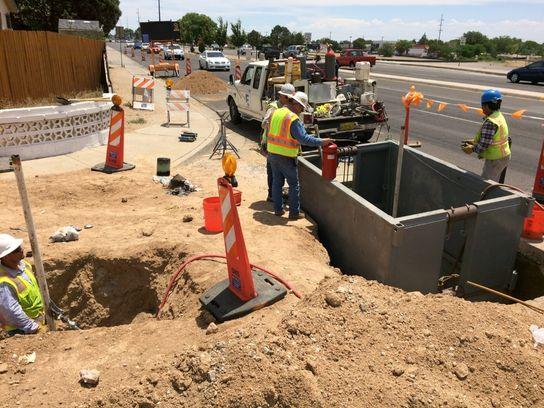These days, erosion control isn’t as easy as it could be. It can be defeating when so many methods seem to fail.
But what about revetment mats?
Believe it or not, revetment mats are taking the engineering world by storm. They’re sturdy, long-lasting, and effective in ensuring that your construction project avoids future damage.
Are you interested? Good. Below, we’ll be discussing revetment mats and how they can benefit you on your next project:
The Purpose of Revetment Mats
Revetment mats work in numerous conditions, no matter the environment. Whether your pipeline project is on land or water, this erosion control method has got you covered. Not only are concrete revetment mats a long-term solution for numerous projects across the country, but they’re also incredibly cost-effective.
These mats consist of articulated concrete elements connected by ultraviolet copolymer extruded fiber ropes. A mouthful, right? The concrete mats are meant to prevent erosion and provide stability and control of the land. They can also ensure proper watersheds in flood-prone areas.
Revetment mats are versatile and can be implemented almost anywhere, most often in volatile and erosive areas of water and land. You may see this method utilized in many pipeline projects.
Various Uses of a Revetment Mat
Because of their versatility, revetment mats can provide protection from erosion in various areas and have many purposes.
Here are some areas where revetment mats provide structure and stability:
- Access roads
- Landfills
- Riverbanks
- Coastlines
- Canals
- Pipelines
- Boat ramps
Revetment mats are also useful in:
- Pipeline protection
- Shoreline protection
- Culvert erosion
- Embankment erosion
- Stormwater repair
- Bridge abutments
What Environment Do Revetment Mats Work Best In?
The short answer is there’s no end to where revetment mats can work so we’ll highlight how a concrete revetment works in numerous environments:
Onshore
Our revetment mats consist of articulated concrete typically used as a protective cover for pipelines in rivers, lakes, or streams. They work as though there’s a concrete mattress that provides armored protection for the entirety of the pipeline.
These mats are similar to traditional alternatives, such as riprap, although they perform better in the beds of streams where higher stress occurs. Riprap is a collection of stones that range from 6 to 30 inches in diameter and are primarily used to create erosion-resistant shorelines. While they can be useful, they can cause punctures in the barrier of filter fabrics, which may lead to potential structural collapse. Concrete mats self-adjust to prevent the migration of erosion while also encouraging the growth of vegetation. A bonus is that these mats can also be removed/replaced for maintenance purposes.
Offshore
Revetment mats work offshore just as well as onshore and are used primarily throughout the oil and gas industry. They perform better underwater compared to riprap, sandbags, grout mats, structural concrete, and other alternatives due to their concrete exteriors. They provide necessary protection against the forces of nature while offshore.
Desert Environments
Our revetment mats work like a charm when placed in a desert area. Their tapered cells help collect moisture that allows them to remain strong no matter how dry the environment gets. They’re easy to move (as long as you have a skid steer) and straddle the pipeline before you set it down.
Does the idea of revetment mats seem like a good fit for your next construction project? Our team of commercial utility contractors can install them for you so you can avoid hassles and reap the rewards. If you’d like to learn more about our revetment mats, contact us at DUB-L-EE.

Eddie has been a resident of Albuquerque his entire life.
After he graduated from high school, Eddie joined the Plumbers & Pipefitters Union where he obtained his Journeyman Plumber and Journeyman Gas Certifications. He then worked in the commercial plumbing industry for 7 years until he and his father decided to go into business together and started Dub-L-EE, LLC.
In the last 7 years Eddie has obtained his GA02, GA03, and MM98 certifications allowing Dub-L-EE to fully utilize Eddie Sr. and Eddie Jr.’s expertise in the construction industry.

